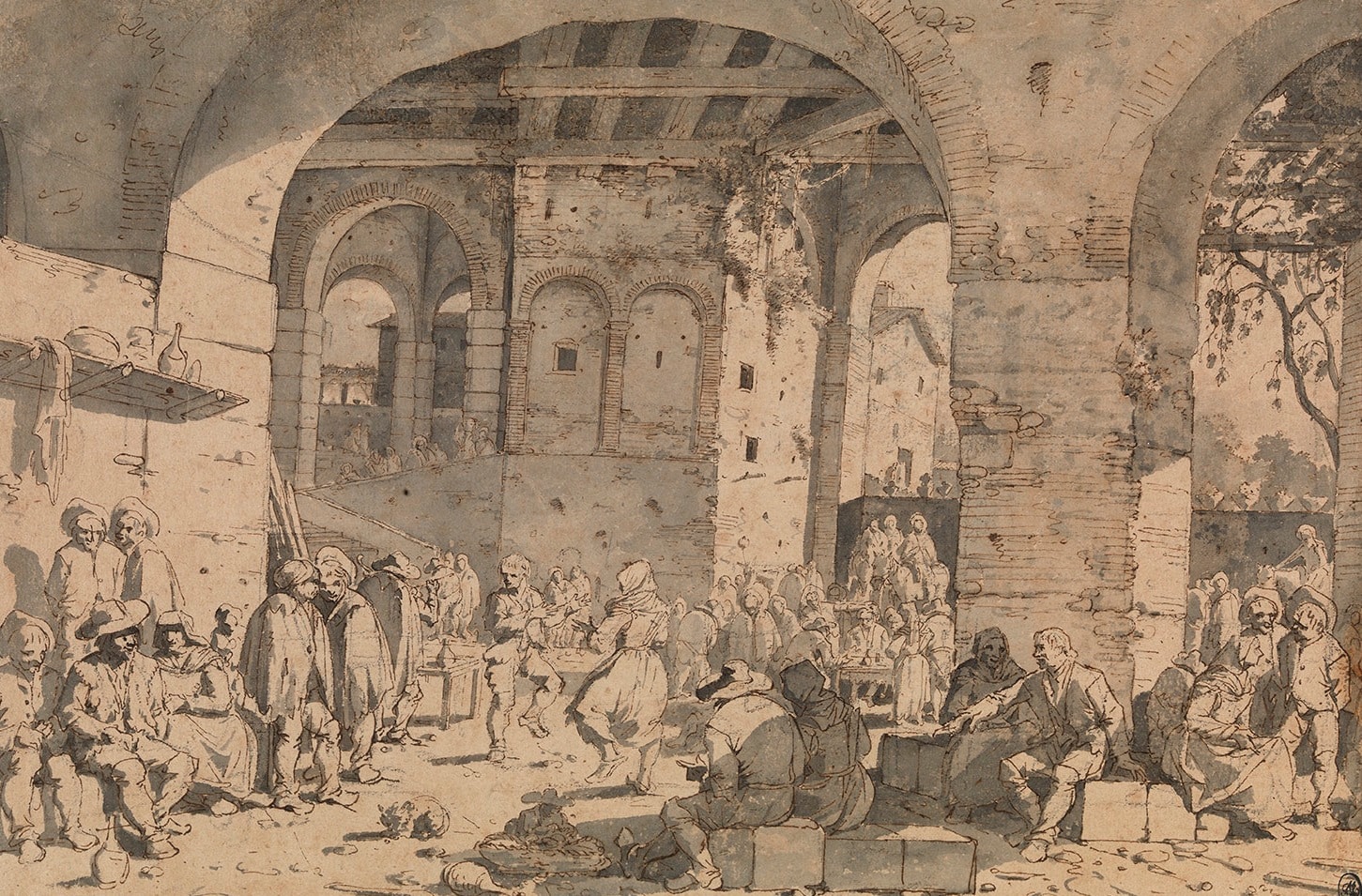
PIETER VAN LAER (HAARLEM 1599 - HAARLEM 1642)
Bamboccianti among Roman ruins
Description:
Pen and brown ink, grey wash, over black chalk263 x 391 mm
Provenance:
M. Gaud, stamped lower leftPrivate Collection, Paris
Note:
Pieter van Laer is chiefly known as one of the finest painters from the Dutch Golden Age. Leaving Haarlem in 1525, he was active for over a decade in Rome and became famous for his landscapes and genre scenes of everyday life. Remaining true to the Dutch tradition he painted a wide variety of scenes including markets, feasts, festivals, hunting scenes and shepherds tending to their flock. So-called “Il Bamboccio”, meaning “ugly doll” or “puppet”, the Italians were making a jibe against both his physical appearance (he was a hunchback) and the size of the figures in his works. This nickname lead to the group of Dutch and Flemish painters present in Rome at the time to be called “Il Bamboccianti”. These artists included amongst others Andries and Jan Both, Thomas Wijck and Willem Schellinks. Like van Laer, they too chose to represent the lower classes in Rome and its surrounding countryside. As the name suggests, they were not held in particularly high regard by their Roman contemporaries, principally as their choice of subject matter was deemed not intellectual. Their small paintings were likened to opened windows in the sense that nothing was added or omitted and in so doing they objectively captured the picturesque and crumbling ruins of the ancient city and the folk that inhabited them. However, patrons and collectors reacted favourably and van Laer achieved financial success. Many of these northern artists were also members of the Schildersbent, a loosely organised guild, known for its lavish festivities and seen as an alternative to the more official establishment of the Academy of St. Luke. The present sheet shows a variety of groups of figures at leisure within a distinctly Roman setting. Men, women and children sit conversing and eating together, while two figures dance in the centre of the composition. Comparable drawings can be found in the British Museum, London, the Teylers Museum, Haarlem and the National Gallery of Scotland. The study in Scotland in particular appears to be remarkably similar in style and setting.
